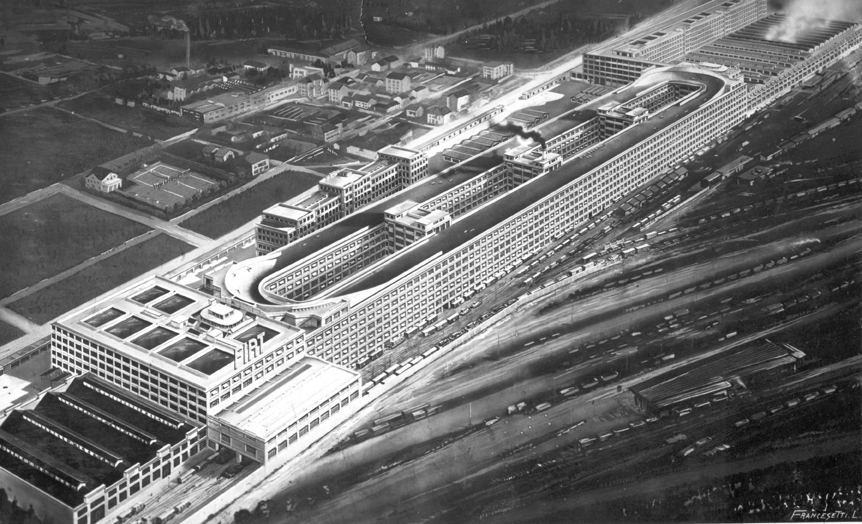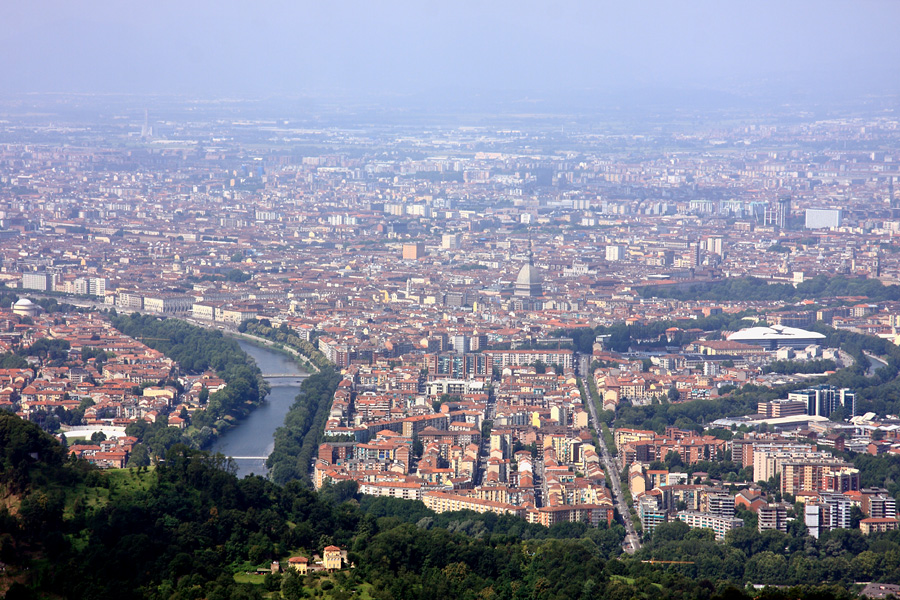|
Porta Susa
Torino Porta Susa is a railway station in Turin, northern Italy; it is the second busiest mainline station in the city, after Torino Porta Nuova. It is located in ''Corso Inghilterra''. History The station was built in 1868 during the expansion of the city towards the west. Trains between Torino Porta Nuova and Milan stop at the station, including TGV services between Paris and Milan and other services using the Turin–Milan high-speed line. Reconstruction In April 2006, reconstruction of the station began in conjunction with the Turin Passante regional railway. This involved quadrupling of the number of tracks that run through central Turin. At Porta Susa station, the line was widened to six tracks with new platforms being built beneath the thoroughfare ''Corso Inghilterra''. A 300-metre long, 19-metre high glass and steel structure has been built above the tracks to create a new station, which is intended to become Turin's main hub of urban, regional and international rai ... [...More Info...] [...Related Items...] OR: [Wikipedia] [Google] [Baidu] |
Turin
Turin ( , Piedmontese language, Piedmontese: ; it, Torino ) is a city and an important business and cultural centre in Northern Italy. It is the capital city of Piedmont and of the Metropolitan City of Turin, and was the first Italian capital from 1861 to 1865. The city is mainly on the western bank of the Po (river), Po River, below its Susa Valley, and is surrounded by the western Alps, Alpine arch and Superga Hill. The population of the city proper is 847,287 (31 January 2022) while the population of the urban area is estimated by Larger Urban Zones, Eurostat to be 1.7 million inhabitants. The Turin metropolitan area is estimated by the Organisation for Economic Co-operation and Development, OECD to have a population of 2.2 million. The city used to be a major European political centre. From 1563, it was the capital of the Duchy of Savoy, then of the Kingdom of Sardinia ruled by the House of Savoy, and the first capital of the Kingdom of Italy from 1861 to 1865. T ... [...More Info...] [...Related Items...] OR: [Wikipedia] [Google] [Baidu] |
Ferrovie Dello Stato
Ferrovie dello Stato Italiane S.p.A. ( "Italian Railways of the State"; previously only Ferrovie dello Stato, hence the abbreviation FS) is Italy's national state-owned railway holding company that manages transport, infrastructure, real estate services and other services in Italy and other European countries. History Early years The company was instituted by an act on 22 April 1905, taking control over the majority of the national railways, which up until that time were privately owned and managed. The president was nominated by the government. The first Director General was Riccardo Bianchi. In June 1912 Ferrovie dello Stato owned 5021 steam locomotives, 151 railcars, 10,037 coaches, 3371 baggage cars and 92,990 goods wagons.Victor Freiherr von Röll''Enzyklopädie des Eisenbahnwesens.''Band 6, Urban & Schwarzenberg, Berlin, 1914, p. 297. (in German) With the rise of Fascism, a centralization policy was carried out. The board of directors and chief administrator office ... [...More Info...] [...Related Items...] OR: [Wikipedia] [Google] [Baidu] |
Railway Stations Located Underground In Italy
Rail transport (also known as train transport) is a means of transport that transfers passengers and goods on wheeled vehicles running on rails, which are incorporated in tracks. In contrast to road transport, where the vehicles run on a prepared flat surface, rail vehicles (rolling stock) are directionally guided by the tracks on which they run. Tracks usually consist of steel rails, installed on sleepers (ties) set in ballast, on which the rolling stock, usually fitted with metal wheels, moves. Other variations are also possible, such as "slab track", in which the rails are fastened to a concrete foundation resting on a prepared subsurface. Rolling stock in a rail transport system generally encounters lower frictional resistance than rubber-tyred road vehicles, so passenger and freight cars (carriages and wagons) can be coupled into longer trains. The operation is carried out by a railway company, providing transport between train stations or freight customer facilit ... [...More Info...] [...Related Items...] OR: [Wikipedia] [Google] [Baidu] |
Railway Stations In Turin ...
Chronological list of stations References External links {{DEFAULTSORT:Railway stations in Turin Transport in Turin Turin Turin ( , Piedmontese language, Piedmontese: ; it, Torino ) is a city and an important business and cultural centre in Northern Italy. It is the capital city of Piedmont and of the Metropolitan City of Turin, and was the first Italian capital ... [...More Info...] [...Related Items...] OR: [Wikipedia] [Google] [Baidu] |
Lingotto
Lingotto is the name of a district of Turin, Italy, as well as the name of the Lingotto building in Via Nizza. It once housed a car factory built by Italian automotive company Fiat and today houses the administrative headquarters of the manufacturer and a multipurpose centre projected by architect Renzo Piano. History Construction of the building started in 1916 and it was inaugurated in 1923. The design by the young architect Giacomo Matté-Trucco, was unusual in that it had five floors, with raw materials going in at the ground floor, and cars built on a line that went up through the building. Finished cars emerged at rooftop level to go onto the test track. The construction was carried out by the company of G A Porcheddu. It was the largest car factory in the world at that time. For its time, the Lingotto building was avant-garde, influential and impressive— Le Corbusier called it "one of the most impressive sights in industry", and "a guideline for town planning" ... [...More Info...] [...Related Items...] OR: [Wikipedia] [Google] [Baidu] |
Turin Metro
Turin ( , Piedmontese language, Piedmontese: ; it, Torino ) is a city and an important business and cultural centre in Northern Italy. It is the capital city of Piedmont and of the Metropolitan City of Turin, and was the first Italian capital from 1861 to 1865. The city is mainly on the western bank of the Po (river), Po River, below its Susa Valley, and is surrounded by the western Alps, Alpine arch and Superga Hill. The population of the city proper is 847,287 (31 January 2022) while the population of the urban area is estimated by Larger Urban Zones, Eurostat to be 1.7 million inhabitants. The Turin metropolitan area is estimated by the Organisation for Economic Co-operation and Development, OECD to have a population of 2.2 million. The city used to be a major European political centre. From 1563, it was the capital of the Duchy of Savoy, then of the Kingdom of Sardinia ruled by the House of Savoy, and the first capital of the Kingdom of Italy from 1861 to 1865. T ... [...More Info...] [...Related Items...] OR: [Wikipedia] [Google] [Baidu] |
La Stampa
''La Stampa'' (meaning ''The Press'' in English) is an Italian daily newspaper published in Turin, Italy. It is distributed in Italy and other European nations. It is one of the oldest newspapers in Italy. History and profile The paper was founded by Vittorio Bersezio, a journalist and novelist, in February 1867 with the name ''Gazzetta Piemontese''. In 1895, the newspaper was bought (and by then edited) by Alfredo Frassati (father of Pier Giorgio Frassati), who gave it its current name and a national perspective. For criticising the 1924 murder of the socialist Giacomo Matteotti, he was forced to resign and sell the newspaper to Giovanni Agnelli. The financier Riccardo Gualino also took a share. The paper is now owned by GEDI Gruppo Editoriale, and has a centrist stance. The former contributors of ''La Stampa'' include Italian novelist Alberto Moravia. ''La Stampa'', based in Turin, was published in broadsheet format until November 2006 when the paper began to be publishe ... [...More Info...] [...Related Items...] OR: [Wikipedia] [Google] [Baidu] |
International Railway Journal
The ''International Railway Journal'' (IRJ) is a monthly international trade magazine published by Simmons-Boardman Publishing in Falmouth, England. History Founded by Robert Lewis and ''Railway Age'' editor Luther Miller as the world's first globally distributed magazine for the railway industry, the first edition of IRJ was published as a pilot in October 1960. Monthly production commenced in January 1961. Content The magazine covers a range of rail-related content, covering sectors including passenger, freight, high-speed, metro and light rail. Regular subject matters include financial news, fleet orders, infrastructure, new technologies and government policy. Circulation and Distribution IRJ publishes regular content on its website, and also publishes a monthly print edition, distributed through controlled circulation. IRJ's print edition had a circulation of 10,234 copies in 2020, according to the Audit Bureau of Circulations (UK). [...More Info...] [...Related Items...] OR: [Wikipedia] [Google] [Baidu] |
Mario Monti
Mario Monti, (born 19 March 1943) is an Italian economist and academic who served as the Prime Minister of Italy from 2011 to 2013, leading a technocratic government in the wake of the Italian debt crisis. Monti served as a European Commissioner from 1995 to 2004, with responsibility for the Internal Market, Services, Customs and Taxation from 1995 to 1999 and for Competition from 1999 to 2004. Monti has also been rector and president of Bocconi University in Milan for many years. On 12 November 2011, in the midst of the European sovereign debt crisis, Monti was invited by President Giorgio Napolitano to form a new technocratic government following the resignation of Silvio Berlusconi. Monti was sworn in as Prime Minister on 16 November 2011, just a week after having been appointed a Lifetime Senator by President Napolitano, and initially became Minister of Economy and Finances as well, giving that portfolio up the following July. From 16 May 2013 to 17 October 2013, M ... [...More Info...] [...Related Items...] OR: [Wikipedia] [Google] [Baidu] |
Turin Passante Railway Line
Turin ( , Piedmontese language, Piedmontese: ; it, Torino ) is a city and an important business and cultural centre in Northern Italy. It is the capital city of Piedmont and of the Metropolitan City of Turin, and was the first Italian capital from 1861 to 1865. The city is mainly on the western bank of the Po (river), Po River, below its Susa Valley, and is surrounded by the western Alps, Alpine arch and Superga Hill. The population of the city proper is 847,287 (31 January 2022) while the population of the urban area is estimated by Larger Urban Zones, Eurostat to be 1.7 million inhabitants. The Turin metropolitan area is estimated by the Organisation for Economic Co-operation and Development, OECD to have a population of 2.2 million. The city used to be a major European political centre. From 1563, it was the capital of the Duchy of Savoy, then of the Kingdom of Sardinia ruled by the House of Savoy, and the first capital of the Kingdom of Italy from 1861 to 1865. T ... [...More Info...] [...Related Items...] OR: [Wikipedia] [Google] [Baidu] |
Metropolitan City Of Turin
The Metropolitan City of Turin ( it, Città metropolitana di Torino, Piedmontese: ''Sità metropolitan-a 'd Turin'') is a metropolitan city in the Piedmont region, Italy. Its capital is the city of Turin. It replaced the Province of Turin and comprises the city of Turin and 311 other municipalities (''comuni''). It was created by the reform of local authorities (Law 142/1990) and established by the Law 56/2014. It has been officially operating since 1 January 2015. The Metropolitan City of Turin is headed by the metropolitan mayor (''sindaco metropolitano'') and by the metropolitan council (''consiglio metropolitano''). Since 5 June 2016, Chiara Appendino has served as the mayor of the capital city, succeeding Piero Fassino. The largest Metropolitan City of Italy, it is the only one to border a foreign state, France. Metropolitan area It has an area of , and a total population of 2,211,114. There are 312 ''comuni'' in the metropolitan area – the most of any province or me ... [...More Info...] [...Related Items...] OR: [Wikipedia] [Google] [Baidu] |





